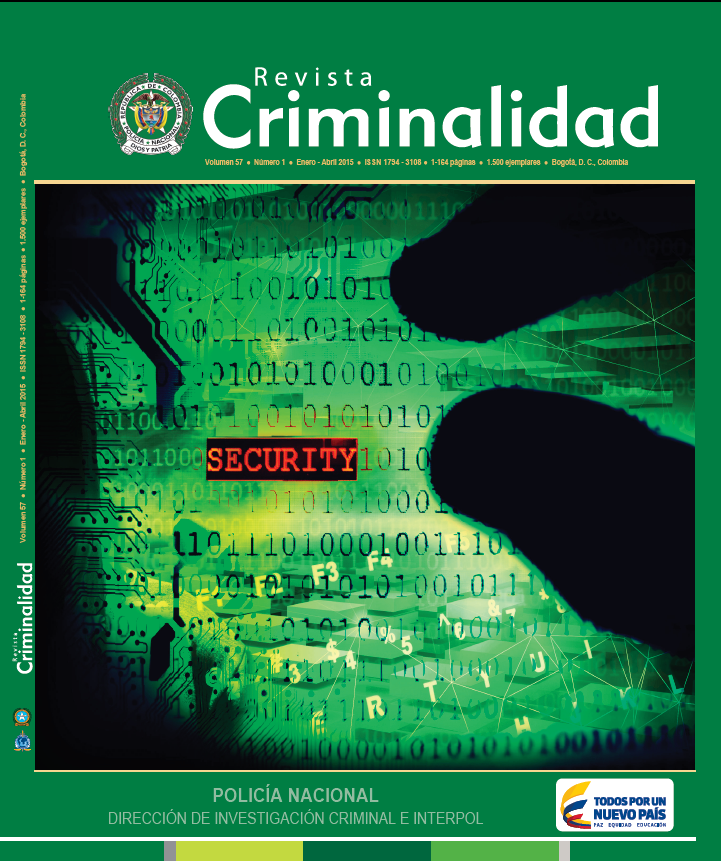Reforzamiento de la seguridad del hogar por miedo al crimen e incivilización social. Estudio de caso en una comunidad políticamente polarizada en Caracas, Venezuela
DOI:
https://doi.org/10.47741/17943108.163Palabras clave:
crimen, miedo, victimización, desorden públicoResumen
La teoría clásica y estudios empíricos recientes han evidenciado que la incivilización o desorden social es un potente factor predictor del miedo al crimen. El presente estudio se trazó como objetivo general realizar un análisis de dependencia sobre la protección del hogar por miedo al crimen, en una comunidad residencial urbana de equivalente tendencia ideológica-partidista, en función de variables como el sexo, inclinación política e incivilización social. Partiendo de un cuestionario suministrado a una muestra representativa de la población objeto de estudio, se utilizó el modelo logit que mejor ajustara los datos para analizar las razones de ventajas entre las variables independientes y la variable dependiente. Los resultados arrojaron que el grado diferencial de reforzar la seguridad en el hogar por miedo al crimen depende en buena medida de los niveles perceptivos de incivilización social. En cuanto al sexo e inclinación política, los datos no arrojaron suficientes evidencias para establecer una sustancial diferencia con sentir miedo al crimen.
Descargas
Referencias
Aguilera, A. (2006). Modelización de tablas de contingencia multidimensionales. Madrid: Editorial La Muralla, S.A.
Andreescu, V. (2010). Victimization and fear of crime in Romania and Hungary: a comparative analysis. Revista Română de Sociologie, serie nouă, anul XXI (3-4): 163-183.
Antillano, A. (2007). Estudio sobre la Policía en Venezuela. En C. N. Policial. La policía venezolana: desarrollo institucional y perspectivas de reforma al inicio del tercer milenio Tomo I (págs. 17-63). Caracas: Luis Gerardo Gbaldón/Andrés Antillano Editores.
Antillano, A., Fréitez, L., Granda, I. & Gregson, R. (2010). Evaluación del servicio de policía comunal de la Policía Metropolitana. En C. G. Policía. Policía Comunal: modelos, conceptos, experiencias y retos (págs. 99-109). Caracas: Ediciones Consejo General de Policía.
Ávila, O., Camardiel, A. & Briceño-León, R. (2012). Victimización, miedo e inhibición. En R. Briceño-León, O. Ávila & A. Camardiel. Violencia e institucionalidad. Informe del Observatorio Venezolano de Violencia 2012 (págs. 81-93). Caracas: Alfa.
Briceño-León, R. (2007). Violencia, ciudadanía y miedo en Caracas. Foro Internacional, XLVII (3): 551-576.
Briceño-León, R. (2009). Venezuela en un mundo de violencia globalizada. En R. Briceño-León, O. Ávila & A. Camardiel. Inseguridad y violencia en Venezuela. Informe 2008 (págs. 15- 43). Caracas: Editorial Alfa.
Briceño-León, R., Ávila, O. & Camardiel, A. (2012). Las tres fases de la violencia homicida en Venezuela contemporánea. En R. Briceño-León, O. Ávila & A. Camardiel. Violencia e institucionalidad. Informe del Observatorio Venezuelano de Violencia 2012 (págs. 51-66). Caracas: Editorial Alfa.
Cohen, L. & Felson, M. (1979). Social change and crime rate trends: a routine activity approach. American Sociological Review, Vol. 44: 588-608.
Cordner, G. (2010). Reducing Fear of Crime. Strategies for Police. U.S. Department of Justice. Office of Community Oriented Policing Services.
Correa, A. (2002). Análisis logarítmico lineal. Madrid: Editorial La Muralla, S. A.
Covington, J. & Taylor, R. (1991). Fear of crime in urban residential neighborhoods: implications of between- and within-neighborhood sources for current models. The Sociological Quarterly, Vol.32 (2): 231-249
Ferraro, K. (1995). Fear of Crime: Interpreting Victimización Risk. Albany: State University of New York.
Frühling, H. (2003). Policía comunitaria y reforma policial en América Latina: ¿cuál es su impacto? Experiencias Temáticas, 171-187.
Gallardo, R. (2014). Desorden, victimización y temor: estudio exploratorio sobre la relación entre la percepción de desorden y delito en Chile. Revista Criminalidad, 56 (3): 25-43.
González, J. (2010). La actuación policial en la prevención del delito. En C. G. Policía. Policía Comunal: concepto, modeles, experiencias y retos (págs. 137-145). Caracas: Ediciones Consejo General de Policía.
Hunter, A. (1978). Symbols of Incivility: Social Disorder and Fear of Crime in Urban Neighborhoods. Northwestern University, Center for Urban Affairs.
Instituto Nacional de Estadística (INE) & Vicepresidencia de la República Bolivariana de Venezuela (2010). Encuesta Nacional de Victimización y Percepción de Seguridad Ciudadana 2009 (ENVPSC-2009). Caracas.
Kelling, G. & Coles, C. (1996). Fixing Broken Windows. New York: The Free Press.
Kessler, G. (2009). El sentimiento de inseguridad. Buenos Aires: Siglo XXI Editores.
Lagos, M. & Dammert, L. (2012). La seguridad ciudadana. El problema principal de América Latina. Lima: Corporación Latinobarómetro.
Latinobarómetro (2011). Informe 2011. Santiago de Chile: Corporación Latinobarómetro.
Latinobarómetro (2013). Informe 2013. Santiago de Chile: Corporación Latinobarómetro.
Montbrun, A. (2010). La experiencia de la policía comunitaria de La Rioja. En C. G. Policía. Policía Comunal: modelos, conceptos, experiencias y retos (págs. 89-95). Caracas: Ediciones Consejo General de Policía.
Moore, M. & Trojanowicz, R. (1988). Policing and the Fear of Crime. Perspectives on policing, No. 3: 1-8.
Ogle, R. (1993). Testing a general model on the fear of crime. Florida: The Florida State University, School of Criminology and Criminal Justice. Presentación de tesis para optar al grado de Master of Science.
Perdomo, R., Malpica, C. & González, N. (1997). Magnitud de la violencia delictiva en Venezuela. Espacio Abierto, 6 (1): 9-28.
Pinto, H. (2010). La experiencia del modelo de policía comunitaria en el Uruguay. En C. G. Policía. Policía Comunal: conceptos, modelos, experiencias y retos (págs. 95-97). Caracas: Ediciones Consejo General de Policias.
Sampson, R. & Raudenbush, S. (2001). Disorder in Urban Neighborhoods - Does It Lead to Crime? (págs. 1-6). National Institute of Justice, USA Departament of Justice.
Tartaglia, S. & Zaccone, S. (2012). Psychological reactions to crime in small local communities. Psicología Política, 44: 57-68.
Taylor, R. (1999). The Incivilities Thesis: Theory, Measurement, and Policy. En R. Langworthy. Measuring What Matters (págs. 65-78). Washington, D. C.: National Institute of Justice/Office of Community Oriented Policing Services.
Taylor, R. & Hale, M. (1986). Testing alternative models of fear of crime. The Journal of Criminal Law & Criminology, 77 (1): 151-189.
Ungar, M. (2003). La Policía Venezolana: el camino peligroso a la politización. Revista Venezolana de Economía y Ciencias Sociales, 9 (3): 205-229.
Valera, F. (2010). Modelos internacionales de policía de orientación comunitaria. En C. G. Policía. Policía Comunal: conceptos, modelos, experiencias y retos (págs. 17-36). Caracas: Ediciones Consejo General de Policía.
Vilalta, C. (2010). El miedo al crimen en México. Estructura lógica, bases empíricas y recomendaciones iniciales de política pública. Gestión y Políticas Públicas, XIX (1): 3-36.
Vilalta, C. (2012). Los determinantes de la percepción de inseguridad en México. México: Banco Interamericano de Desarrollo.





















